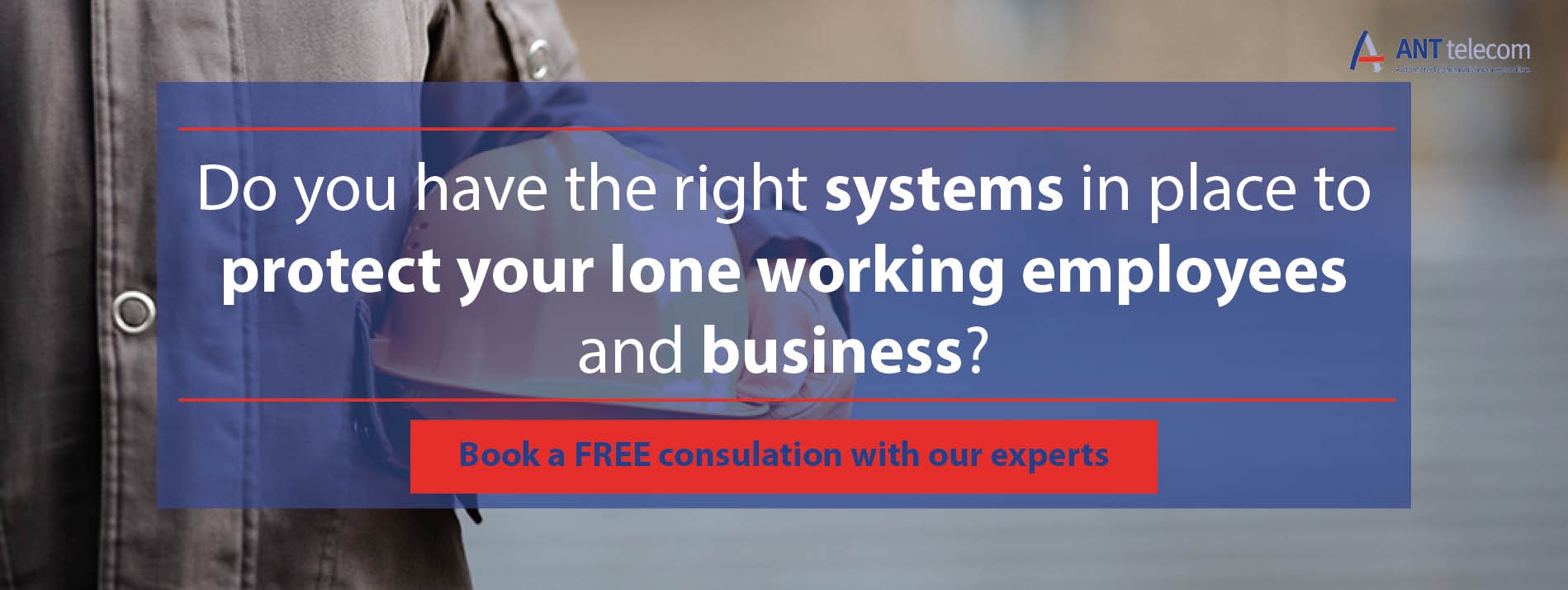
Lone working is a challenging subject for companies and employees alike. There often arises a misunderstanding as to the meaning of the term “lone worker”. Many employees and even some employers seem to think it means solitary workers. This may well be true in some instances, but the term can refer to employees who routinely have to carry out tasks alone, even if there are other employees on the premises. What is to blame for this common misunderstanding? What can companies do to ensure their employees take the necessary precautions when working alone? What is the company’s responsibility when it comes to making sure staff receive the training and education they need to understand lone working? Companies are reducing staff numbers due to the pandemic, and lone working is an issue now more than ever. In this blog, you will learn about the steps a company should take to ensure legal compliance and the safety of all its workers.
What Do Companies Stand To Lose
Companies stand to lose more than they realise if they do not put in place adequate measures to protect lone workers. Every business has different needs when it comes to the requirements for their employees to work on their own. The Health and Safety At Work Act is the umbrella piece of legislation with which all employers and employees must comply. Failures in health and safety practice may have severe consequences for businesses and individuals, which can include:
- Serious injury and inability to perform work duties, in some cases permanently.
- Loss of productivity and business if an HSE investigation becomes necessary.
- Damage to reputation and brand if a company is prosecuted for health and safety failures.
- Social impact on colleagues and families of workers injured at work.
Companies have a legal and moral obligation to ensure all employees are safe at work. Lone working poses unique risks, against which companies must make every effort to mitigate. Lone workers also need to have the information, knowledge and resources to ensure they work safely. Next, you’ll learn about how companies can educate and empower workers to ensure they are as safe as reasonably possible when carrying out lone working tasks.
Empowering Staff with Training and Education
It is a legal requirement for all staff to receive health and safety training, whether they are lone workers or not. To improve the quality of staff training, especially lone workers, they should be aware of the risks their roles pose to them and the company. Involving workers in developing risk assessments is one way of creating more awareness of what it means to be a lone worker.
If your company’s risk assessment identifies lone working, you must implement systems and processes to eliminate, reduce or control the risks. Training is one of the strongest pillars to a robust lone working policy. The training should cover the risks as well as providing the support employees need to ensure they feel safe at work. Provide the information they require and ensure your workers:
- Are aware of the risks they face when working alone.
- Know the procedure to use in the event of an incident.
- Receive regular training to refresh their knowledge of lone working risks and procedures.
- Participate in lone working incident management drills to ensure the processes are robust and still apply to changing work or site operations.
- Are involved in the periodic review of risk assessments so that their input is taken into account.
Training builds competence and confidence in your workers. It also empowers them to make the correct use of technical systems with limited supervision. Also, adequate training enables workers to recognise the limits of their knowledge and encourages them to seek advice.
Reaping the Rewards of Worker Education and Reliable Systems
Smurfit Kappa is a large global business and their lone worker challenges were typical of other manufacturing companies with multiple sites.
What they needed was a reliable solution that could easily be rolled out across all sites. The system had to:
- Be deplorable over multiple sites with ease
- Allow users to trigger an alarm in the event of an incident, even if rendered unconscious
- Alert a local team of responders within a few seconds of any incident
- Provide details of who has triggered the alert and their location
- Provide an audit trail for monitoring purposes to ensure compliance with health and safety legislation
The solution proposed by ANT Telecom was Aspect Link along with Atlas Protector handsets. The system features automatic routing of alarms, while keeping a record every of alarm trigger within its audit trail. This was a perfect solution for handling lone worker protection on multiple sites as the hosted system automatically routes the alarm to a local response team that can quickly react and deal with any incident.
Technology Versus Manual Lone Worker Protection Systems
Using technical solutions for managing the risk your workers face when working alone is good way of protecting staff. Manual systems often put the emphasis on managers or supervisors to monitor their team and ensure that they are safe. This could entail calling them periodically throughout the day or going to visit them in person. When managers are busy, however, these necessary checks often stop, leaving workers vulnerable.
Automated solutions, however, are much more reliable, offer round the clock protection and generally far more cost effective than manual solutions that take up too much time.
Improving and educating staff about lone working risks and how to stay safe is a worthy investment for any employer. Coupling training with a lone worker protection system will help you establish a robust and reliable lone working procedure to keep your workers safe. ANT Telecom will help you design, install and maintain a reliable lone worker protection solution to meet the needs of your business. Get in touch today to find out how educating your staff will help you comply with Health and Safety legislation and give your employees peace of mind when working alone.





